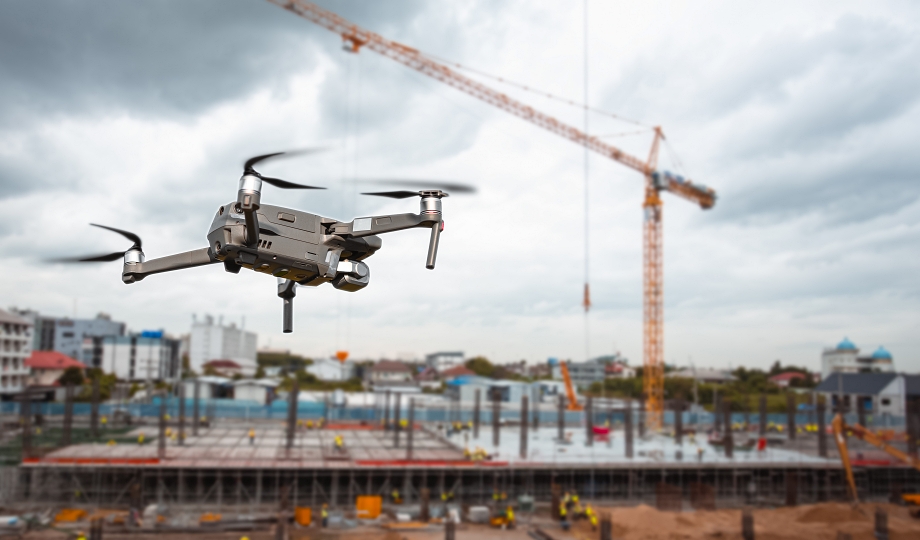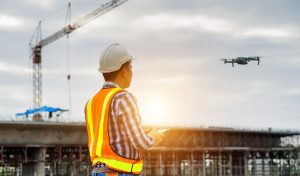
Drones and site digitization are revolutionizing the construction industry in bold ways. They provide construction managers with efficient and accurate ways to collect data, monitor progress, and manage projects. Drones, unmanned aerial vehicles (UAVs), can quickly capture high-resolution aerial imagery and topographic data. The data is used to create 2D maps, 3D models, and digital terrain models (DTMs). This data is crucial for site analysis, planning, design, and construction. Contact ITI Technical College today for more information.
Key Applications Of Drones And Site Digitization
 Drones and site digitization have astounding applications in today’s construction industry. Construction managers find their jobs more efficient and challenging by using these two technologies. The following uses are very effective in all types of construction:
Drones and site digitization have astounding applications in today’s construction industry. Construction managers find their jobs more efficient and challenging by using these two technologies. The following uses are very effective in all types of construction:
- Asset Tracking: Drones can track construction materials, equipment, and vehicles to improve inventory management and reduce costs.
- Documentation and Reporting: These flying data collectors can provide detailed documentation of construction progress to facilitate communication and collaboration among stakeholders.
- Inspections: Drones can inspect structures, identify defects, and monitor safety compliance to reduce the need for on-site employee intervention and enhance safety.
- Progress Monitoring: Construction progress, tracking earthworks, and measuring stockpile volumes can be assessed with drones. The real-time data helps construction managers stay on track and make informed decisions.
- Site Analysis and Surveys: Drones can quickly and accurately gather information about a site’s topography, soil composition, and surrounding environment.
- Safety Control: Drones can monitor safety processes at the construction site and ensure compliance with best practices and regulations.
- 3D Mapping and Modeling: Drones can accurately create 3D models of construction sites, which are valuable for planning, design, and communication.
Benefits Of Using Drones And Site Digitization
Construction managers find multiple benefits of using drones and site digitization. They find that drones significantly and efficiently speed up data collection and analysis, reduce project timelines, and costs. Drones and captured digitized data are highly accurate, reduce errors, and ensure the quality of construction projects.
These technologies can reduce the need for on-site safety employees, especially in hazardous areas, and improve human, material, and equipment safety. Real-time data and visualizations can be captured to improve communication and collaboration from clients to managers. Drones can reduce the need for traditional surveying methods to save time, energy, and money.
|
“Drones and site digitization are revolutionizing the construction industry in bold ways. They provide efficient and accurate ways to collect data, monitor progress, and manage projects.” |
Challenges And Considerations
Construction managers realize there are challenges and considerations with using drones and digitized site construction. This applies to residential, commercial, and industrial construction projects. Here are the most common challenges managers must plan for:
- Adverse Weather: Strong winds, rain, hail, sleet, snow, or extreme temperatures can make it difficult to fly drones.
- Data Breaches and Security Risks: Managers realize that drones, like other connected devices, are vulnerable to hacking and data breaches.
- Data Processing: Capturing relevant data with drones is just one step. Analyzing, processing, and digitizing the data requires specialized software and expertise.
- Limited Flight Time: Managers must work with shorter flight times than manned aircraft. This can limit drones’ abilities to cover large areas or conduct long-duration inspections.
- Regulations: Operating drones on construction sites requires adherence to regulations and licensing requirements.
- Training: Drone operators must be trained and certified to operate drones safely and effectively for real-time, relevant, and accurate data.
Drone And Site Digitization Trends
 Construction managers are perfecting their skills with current drone and site digitization use, but must plan for future trends. Continued advancements in drone technology, including improved flight times, camera quality, and automation, are underway.
Construction managers are perfecting their skills with current drone and site digitization use, but must plan for future trends. Continued advancements in drone technology, including improved flight times, camera quality, and automation, are underway.
Managers must learn to integrate drones with other digital tools and technologies, such as Building Information Modeling (BIM) and artificial intelligence (AI). We will see the increased use of drones for various construction applications, including pre-construction planning, real-time monitoring, and post-construction inspections.
In conclusion, construction drones are valuable tools for streamlining construction projects and improving site digitization. They offer a range of benefits, including increased efficiency, safety, and cost savings, making them an essential part of modern construction practices.
Construction Management Training
Prospective construction managers need a solid base of construction education and skills to obtain an entry-level position. ITI Technical College offers an industry-approved curriculum in our Associate of Occupational Studies (AOS) Degree in the Construction Management Program.
Let us help prepare you for a stable career in Construction Management. Request information about the program, talk to our admissions representative, and tour our campus. You will be glad you did.
For more information about graduation rates, the median debt of students who completed the program, and other important information, please visit our website: https://iticollege.edu/disclosures/




